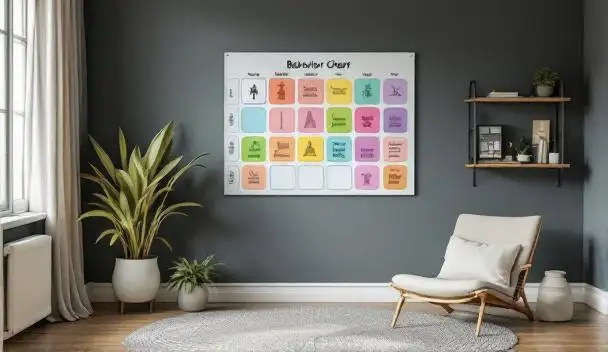Understanding the Impact of ABA on School Readiness for Children with Autism
Applied Behavior Analysis (ABA) therapy is a cornerstone in supporting children with autism as they prepare to enter and thrive in school environments. Its structured, evidence-based approach targets critical skills in communication, socialization, and self-regulation, which are essential for successful academic and social participation. The following narrative explores how ABA therapy helps children develop these foundational skills, the strategies employed, and the vital role parents play in this process.
Core Objectives of ABA Therapy in School Preparation
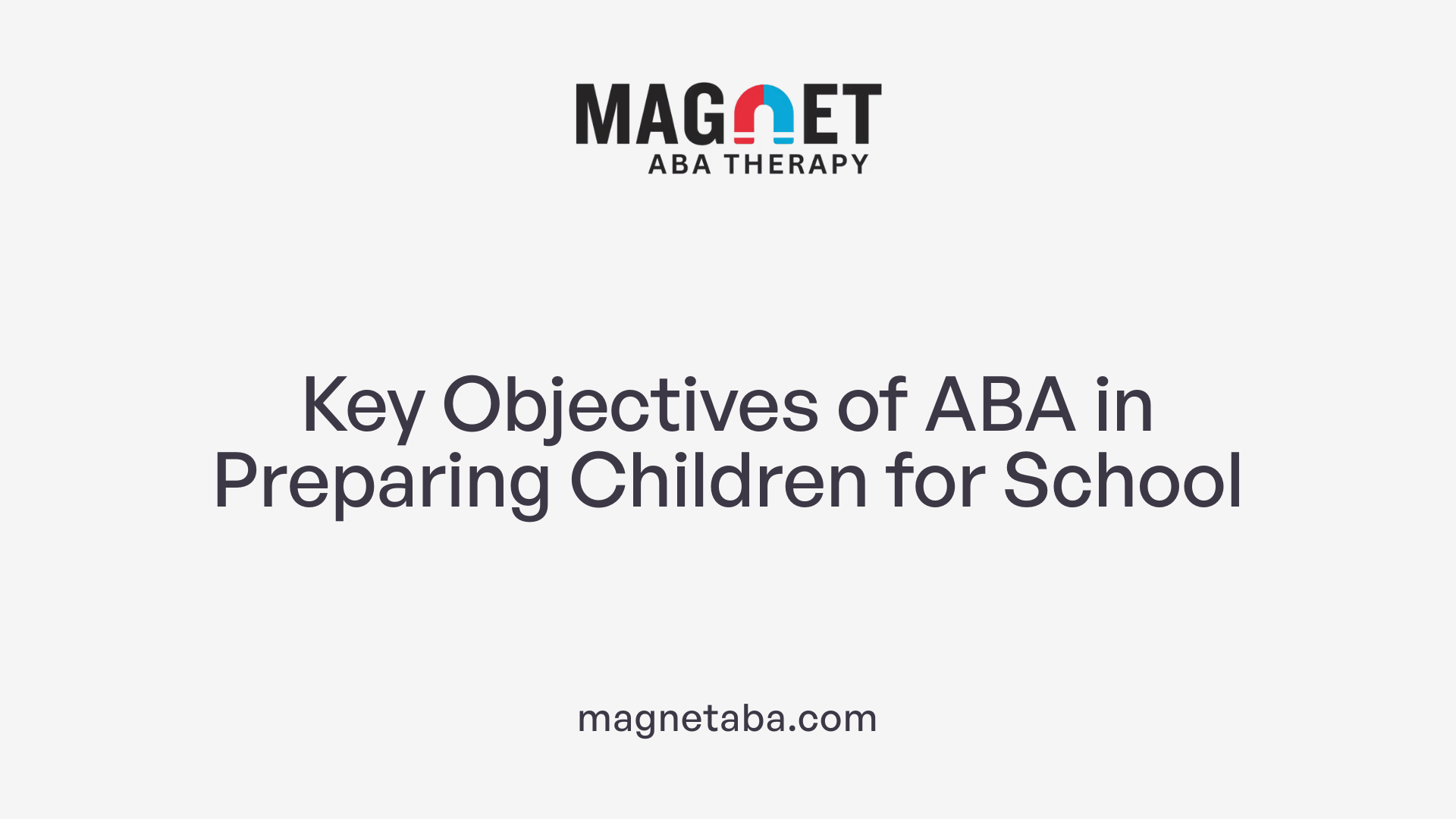
How does ABA therapy contribute to a child's readiness for school?
ABA therapy plays a vital role in preparing children, especially those with autism, for a successful school experience. It does so by teaching essential skills that support effective participation in an academic setting.
One of the main focuses is developing communication skills. Through techniques like visual supports, speech interventions, and alternative communication methods such as Picture Exchange Communication Systems (PECS), ABA helps children express their needs and ideas clearly. This foundational skill ensures children can ask for help, participate in discussions, and understand instructions.
Social interaction is another critical area enhanced through ABA therapy. Children learn to initiate conversations, respond appropriately, share toys, take turns, and recognize social cues. Through structured play and role-playing, children improve their ability to build friendships and navigate peer relationships.
ABA therapy also emphasizes behavioral regulation. Children are trained to manage emotions, cope with frustration or sensory sensitivities, and follow classroom routines. Strategies include positive reinforcement, visual supports, and breaking down complex behaviors into manageable steps.
In addition, ABA supports academic readiness by teaching pre-academic skills like attention, following multi-step instructions, matching, sorting, and recognizing basic concepts such as numbers and shapes. These skills lay the groundwork for more advanced learning.
Children are often introduced to routines and activities similar to those in a traditional classroom, such as transitioning between tasks and participating in group activities. This familiarization reduces anxiety and builds confidence.
Overall, ABA therapy equips children with the necessary communication, social, behavioral, and academic skills to transition smoothly into school environments. Its personalized and structured approach fosters independence and motivation, setting the stage for ongoing educational success.
Preparing Children for Classroom Entry and Transition
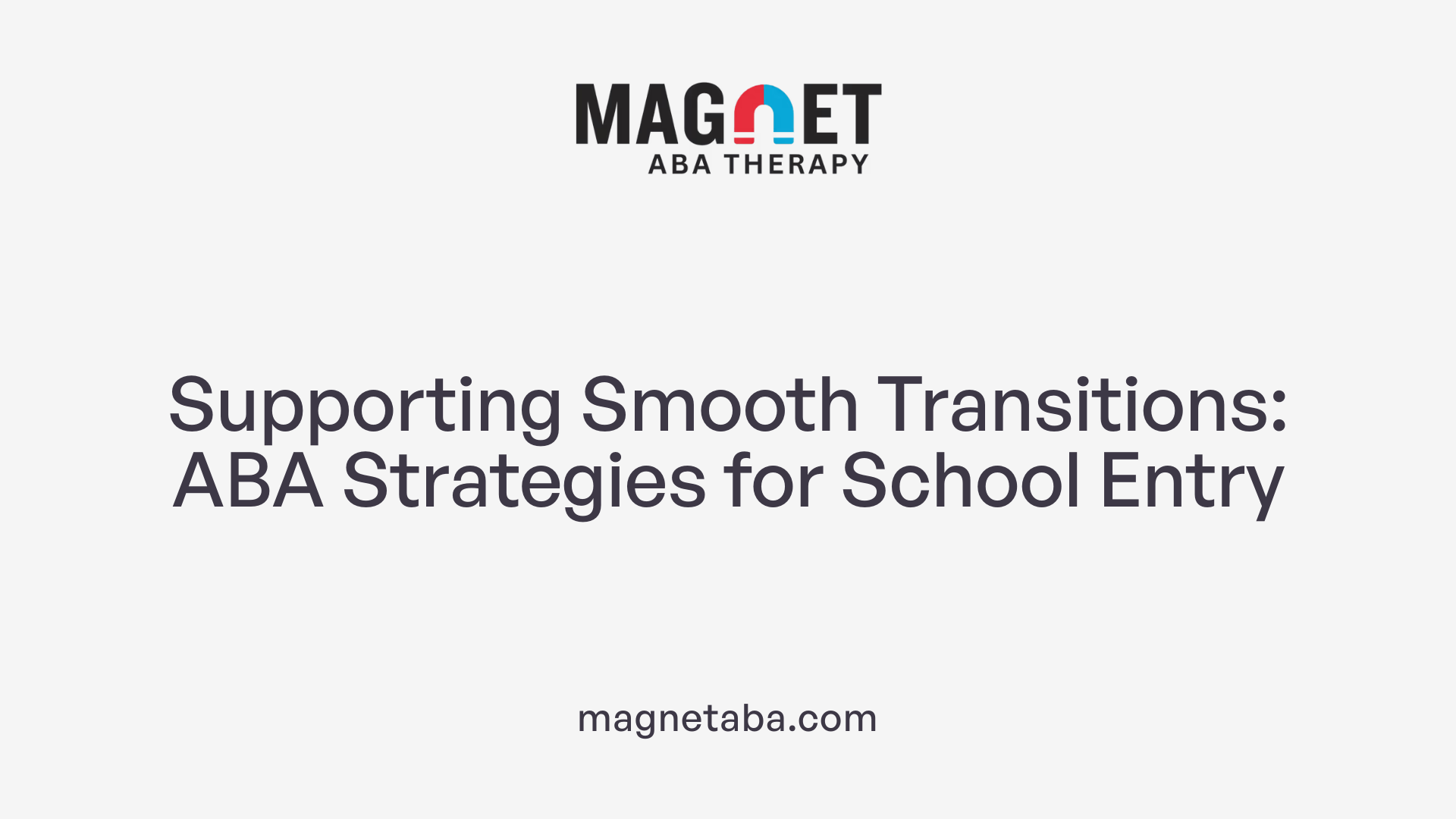
How does ABA therapy assist children with autism in getting ready for the classroom?
ABA therapy plays a vital role in equipping children with autism for school by focusing on developing necessary skills that foster independence and social participation. It emphasizes enhancing communication, social interaction, and self-regulation abilities—all essential for a smooth transition.
One of the main components of ABA intervention is teaching children how to follow routines and respond to structured activities. Therapists utilize visual supports, such as picture schedules and social stories, which help children understand daily expectations and reduce anxiety related to new environments.
Through role-playing, simulation of classroom scenarios, and reinforcement strategies, children learn to initiate communication, respond appropriately, and share attention with peers. These skills are critical as they promote positive social behaviors, like taking turns and making eye contact, which are fundamental for peer interactions.
ABA therapy also targets emotional regulation by teaching children how to recognize their feelings and employ coping strategies to manage frustration or sensory sensitivities. This ability to self-regulate is crucial for maintaining focus and managing behavior during classroom routines.
Preparing for school involves not only behavioral skills but also fostering independence with self-help tasks like dressing, using the restroom, and managing personal belongings. ABA programs tailor these lessons to individual needs, often incorporating small, manageable steps to build confidence and competence.
Collaboration with parents and educators is fundamental to reinforce skills learned during therapy sessions. Together, they create consistent routines and strategies, ensuring the child's progress transfers seamlessly from therapy settings to real-world classroom environments.
Studies from reputable sources indicate that early intervention through ABA therapy significantly improves language, social skills, and adaptive behaviors, leading to a more successful school experience.
What are specific strategies used in ABA therapy to prepare for school?
- Use of visual supports and social stories for understanding routines.
- Role-playing and simulation of classroom activities.
- Reinforcement of communication skills, including spoken language and alternative methods like PECS.
- Teaching adaptive skills such as self-care and managing belongings.
- Emotional regulation techniques, like recognizing emotions and employing calming strategies.
How do these skills translate to better school adaptation?
| Skill Area | Teaching Strategy | Expected Outcome | Empirical Evidence |
|---|---|---|---|
| Communication | Use of PECS, speech interventions | Express needs, follow instructions | 75% speech clarity improvement |
| Social Skills | Turn-taking, role-playing | Form friendships, cooperation | 70% increase in social interaction |
| Daily Living | Dressing, hygiene practice | Independence in routine tasks | 75-80% mastery rate |
| Emotional Regulation | Visual supports, emotion charts | Manage frustrations, anxiety | Reduced meltdowns documented |
Final thoughts
ABA therapy’s structured approach ensures that children gain the essential skills needed for successful school entry. Tailored interventions, combined with family and school collaboration, create a consistent and supportive environment that fosters confidence and independence. With early and targeted ABA interventions, children with autism are better prepared to navigate the complexities of the school setting, promoting long-term educational and social success.
Targeted Skills for School Success
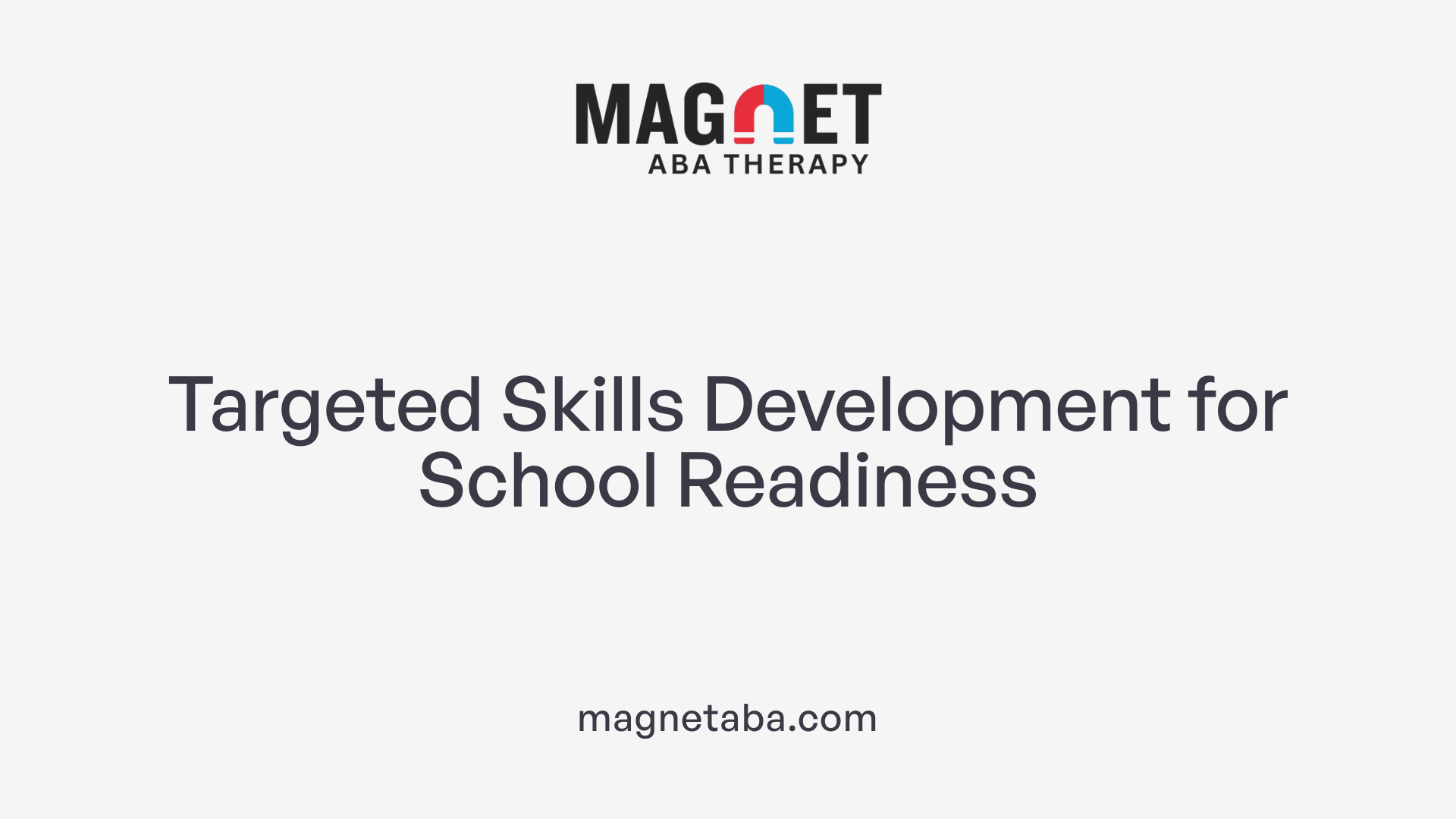
What specific skills are targeted through ABA therapy to ensure school preparedness?
ABA therapy focuses on developing a wide range of skills essential for children to succeed in a school environment. It aims to improve communication abilities, social interaction, self-help skills, and foundational academic routines.
Communication skills are a primary focus, including both verbal and non-verbal strategies such as speech development and alternative communication methods like Picture Exchange Communication Systems (PECS). Children learn to express their needs and follow instructions effectively.
Social skills are also emphasized, teaching children how to initiate conversations, share, take turns, maintain eye contact, and interpret social cues. These interactions help build friendships and promote cooperative play.
In addition, ABA therapy works on daily living and self-help skills, such as dressing, using the bathroom independently, managing personal belongings, and participating in classroom routines. Fine and gross motor skills are developed through structured activities, supporting mobility and self-care.
Pre-academic skills, including matching, sorting, taping, and recognizing patterns, are gradually introduced. ABA programs expose children to routines similar to those in schools, like lining up, transitioning between activities, and understanding classroom rules.
Visual supports, role-playing, and simulated school visits help children become familiar with the environment and expectations. This comprehensive approach ensures children develop confidence and independence.
Overall, ABA therapy prepares children to meet the social, behavioral, and academic challenges of school with skills tailored to their unique needs. It promotes a smooth transition by building foundational abilities necessary for effective learning and social participation.
Strategies and Methodologies in ABA for Educational Readiness
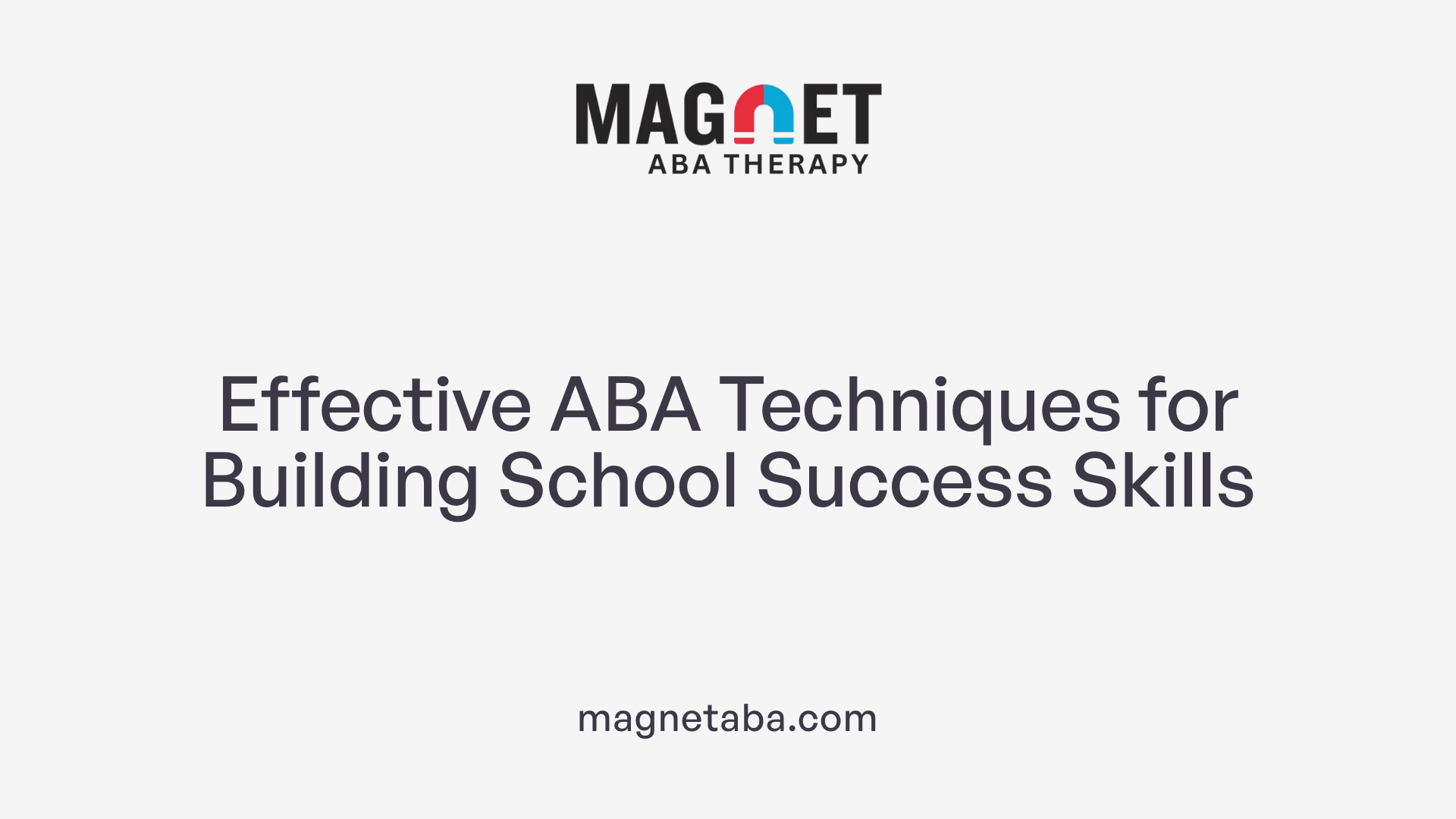
What strategies in ABA therapy support a child's readiness for school?
ABA therapy uses several well-established methods to prepare children for success in school environments. These strategies are customized to each child’s needs and include structured techniques like Discrete Trial Training, Natural Environment Teaching, and Pivotal Response Training.
Discrete Trial Training (DTT) is a systematic approach where skills are broken down into small steps, taught through repeated practice, and reinforced with praise or rewards. This method helps children develop foundational skills like following instructions, responding to their names, and enhancing vocabulary.
Natural Environment Teaching (NET) focuses on applying skills during everyday activities and routines. It promotes learning in real-world contexts, helping children generalize their knowledge beyond structured sessions. For example, practicing social interactions during play or tasks like asking for help during snack time.
Pivotal Response Training (PRT) targets pivotal areas such as motivation, response to multiple cues, and self-management. By improving these key areas, children tend to make broader developmental gains, including better social engagement and communication.
Visual supports and modeling are also crucial tools. Visual schedules, emoji charts, and hand-over-hand modeling help children understand expectations and imitate desired behaviors. These visual aids clarify routines, reduce anxiety, and promote independence.
In addition to these techniques, parent-therapist collaboration ensures consistency across settings. Therapists train parents to incorporate ABA strategies at home, enabling children to practice skills in various environments. Regular progress assessments allow for adjustments, ensuring that each intervention remains targeted and effective.
Together, these approaches develop skills such as sharing, turn-taking, following multi-step instructions, and managing emotions. Mastering these areas facilitates smoother transitions into classroom routines and enhances overall school readiness.
Benefits of ABA Therapy in School Entry and Transition
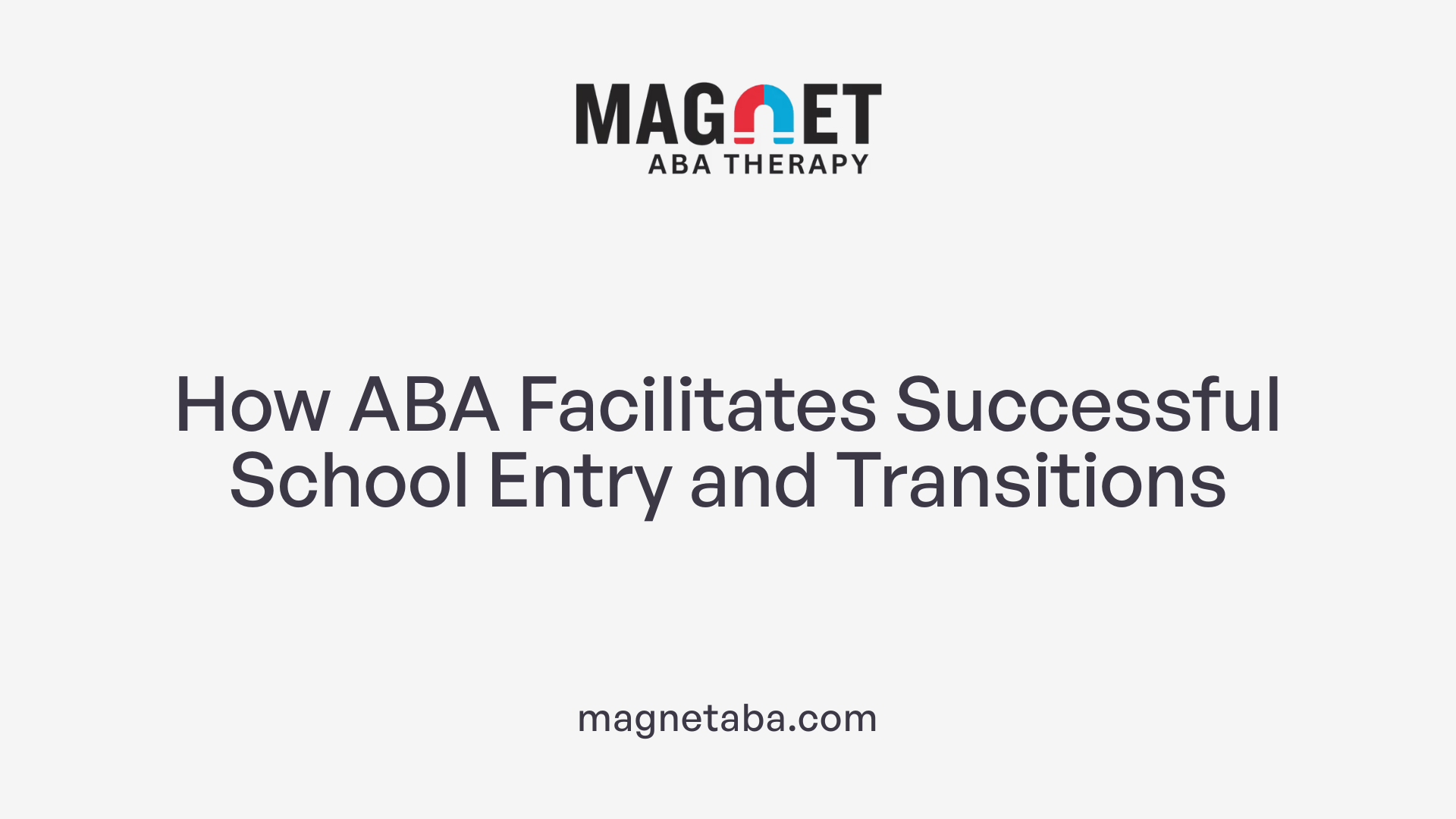
What are the benefits of ABA therapy in helping children with autism successfully enter and transition into school?
ABA therapy provides vital support for children with autism as they prepare to join a school environment. It helps develop fundamental skills such as effective communication, social interaction, emotional regulation, and behavioral self-control. By focusing on observable behaviors and using evidence-based strategies, ABA therapy tailors interventions to each child's unique needs.
One of its significant advantages is the use of personalized programs conducted within familiar settings like home or school, which reduces anxiety and fosters a sense of comfort. This familiar environment, coupled with structured activities and routines, promotes better focus and engagement during learning.
Parental involvement is essential, as ABA programs encourage active participation, providing training and resources that help reinforce skills at home. This consistent approach supports the generalization of skills across different settings.
Data collection and ongoing assessment allow therapists and families to track progress, adjusting strategies to maximize developmental gains. Overall, ABA therapy equips children with the essential skills needed for successful academic participation and social integration, laying a strong foundation for lifelong learning and community involvement.
Parental Engagement and Support
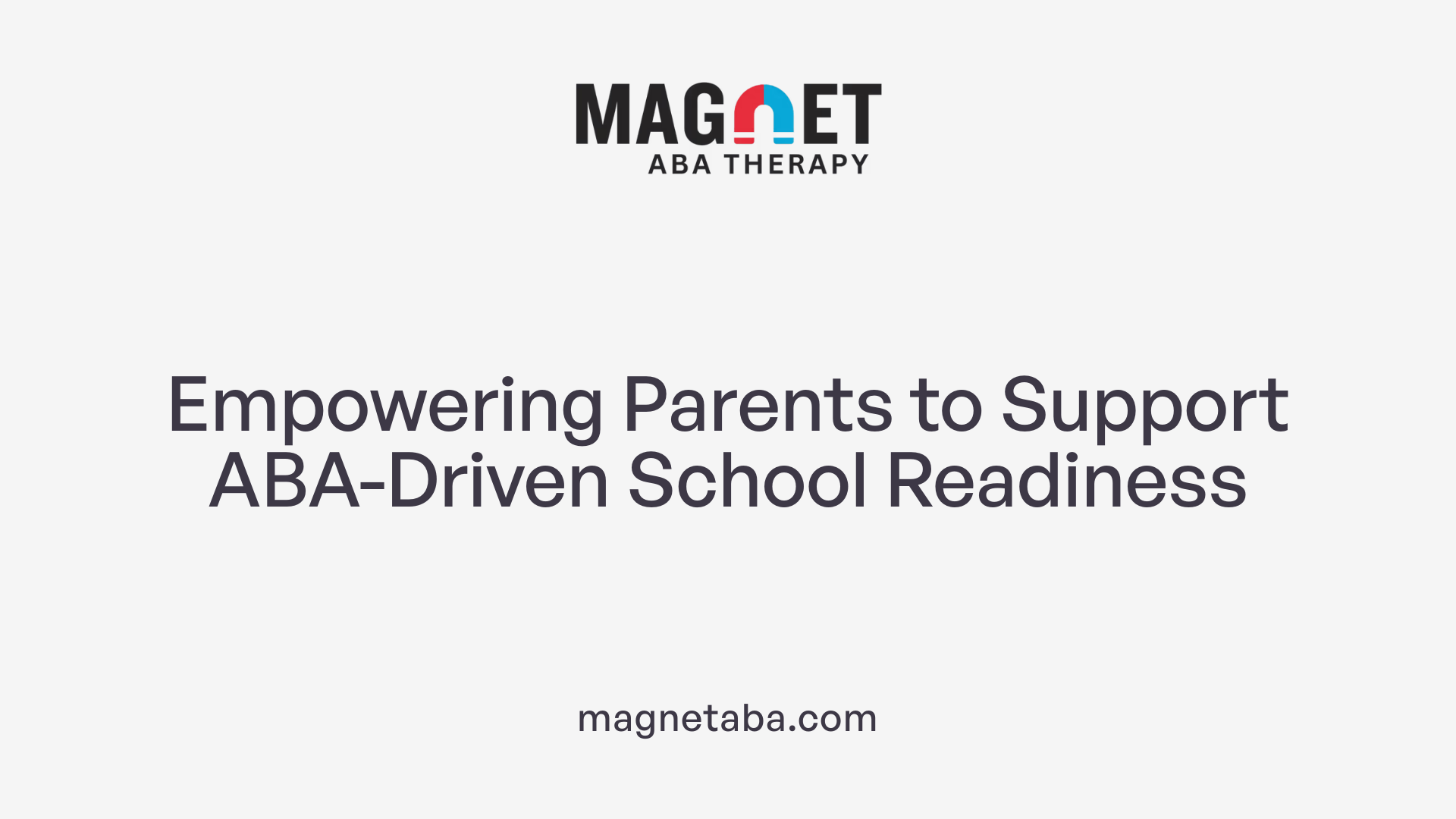 Parental involvement plays a vital role in the success of ABA therapy, especially when preparing children for school. ABA programs actively support parents through training and education, equipping them with techniques to reinforce learning at home. This collaboration ensures consistency in applying behavioral strategies across different environments, which reinforces skill development and helps children generalize learned behaviors.
Parental involvement plays a vital role in the success of ABA therapy, especially when preparing children for school. ABA programs actively support parents through training and education, equipping them with techniques to reinforce learning at home. This collaboration ensures consistency in applying behavioral strategies across different environments, which reinforces skill development and helps children generalize learned behaviors.
Therapists work closely with parents by providing structured guides, ongoing education, and clear communication about intervention plans. This partnership enables parents to understand how to implement ABA techniques effectively, collect data on progress, and adapt strategies as needed. Teaching parents about emotional regulation, social skills, and daily living skills empowers them to support their child's ongoing development.
Supporting the generalization and maintenance of skills learned during therapy is another crucial aspect. Parents are encouraged to incorporate routines similar to school environments, such as practicing classroom-like activities, establishing consistent schedules, and promoting independence in self-help tasks like dressing or managing belongings.
Creating a supportive home environment further boosts the child's readiness for school. This can include establishing routine social interactions, engaging in reading activities, and encouraging play that develops communication and social skills. Such involvement not only promotes skill retention but also builds parental confidence and advocacy with educators.
Ultimately, active parent participation in ABA therapy fosters a cohesive approach to learning, ensuring that children are well-prepared for the transition to school and equipped to succeed in their educational journey.
The Multidisciplinary Approach and Future Directions
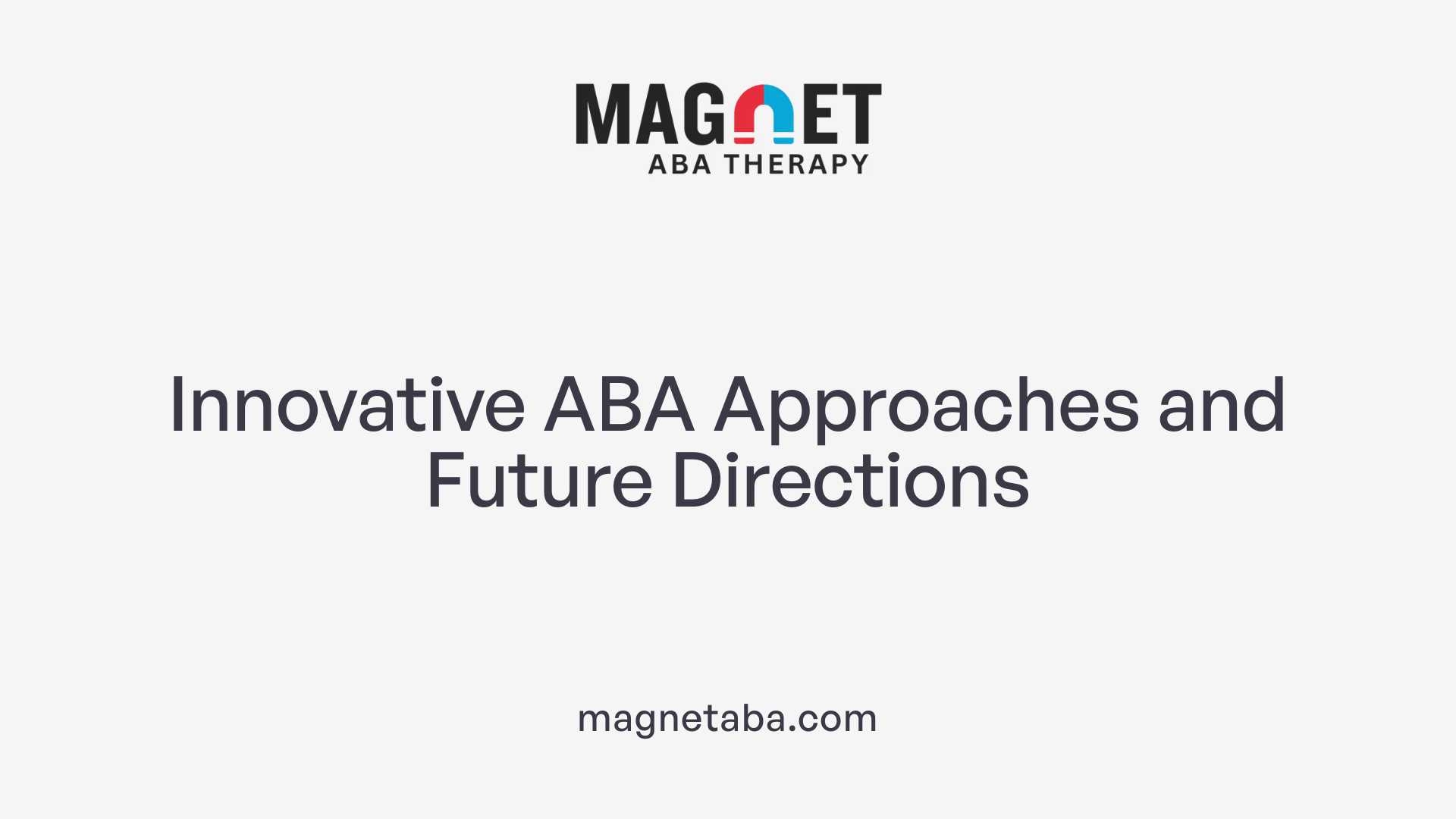
Why is ABA therapy considered essential in enhancing skills critical for school success in children with autism?
ABA therapy plays a vital role in preparing children with autism for classroom environments by targeting core areas like communication, social interaction, emotional regulation, and daily living skills. Its systematic approach ensures that children learn essential skills such as asking questions, sharing, following instructions, and staying organized.
Using evidence-based techniques such as discrete trial training and naturalistic teaching, ABA therapists analyze behaviors through the A-B-C (Antecedent-Behavior-Consequence) model. This allows for targeted interventions that reduce challenging behaviors and promote positive interactions. Positive reinforcement encourages children to practice and retain these skills effectively.
The therapy also emphasizes skill generalization—applying learned behaviors across different settings—which is crucial as children transition into school. Customizing interventions to meet individual needs ensures that children develop the independence and adaptive behaviors necessary for success.
Incorporating ABA principles into classroom routines and Individualized Education Programs (IEPs) supports tailored educational strategies. These strategies help educators implement consistent behavioral supports, making the learning environment more accessible.
Overall, ABA's structured, data-driven approach enhances a child's ability to function independently, participate socially, and navigate academic tasks confidently. This holistic development fosters better educational outcomes and paves the way for lasting success in school settings.
Collaboration with educators and therapists
Partnerships between ABA professionals, teachers, and therapists are essential for consistent support.
Integration with occupational therapy and speech therapy
Combining ABA with occupational and speech therapies addresses sensory and communication challenges.
Tailoring interventions to individual needs
Personalized programs ensure each child’s specific skills and challenges are targeted.
Future research and evolving strategies
Emerging methods and ongoing studies aim to refine and expand ABA’s effectiveness, better supporting children’s learning and development.
Fostering Educational Success Through ABA
In conclusion, ABA therapy plays an indispensable role in preparing children with autism for school by systematically developing the core skills needed for successful participation in classroom activities. Through personalized interventions, strategic teaching methods, and active parental involvement, children gain confidence, independence, and social competence. As research continues to evolve, the integration of ABA with other therapeutic approaches and educational strategies promises to further enhance outcomes. Ultimately, ABA-led preparation ensures that children with autism are not only ready for school but equipped with the skills to flourish academically, socially, and emotionally in their educational journey.
References
- Home-Based ABA Therapy to Prepare Your Toddlers For School
- How ABA Therapy Supports School Readiness in Children with Autism
- ABA Therapy and School Readiness - Inner Circle Autism Network
- ABA School Readiness Therapy For Your Child - Step It Up ABA
- School Readiness Support Through ABA Therapy
- How ABA Therapy Supports School Readiness in Children with Autism
- School Readiness - Applied Behavioural Interventions
- School Readiness - How to ABA - howtoaba.com
- How ABA Therapy Boosts School Readiness for Children with Autism
- How ABA Therapy Supports School Readiness in Children with Autism



